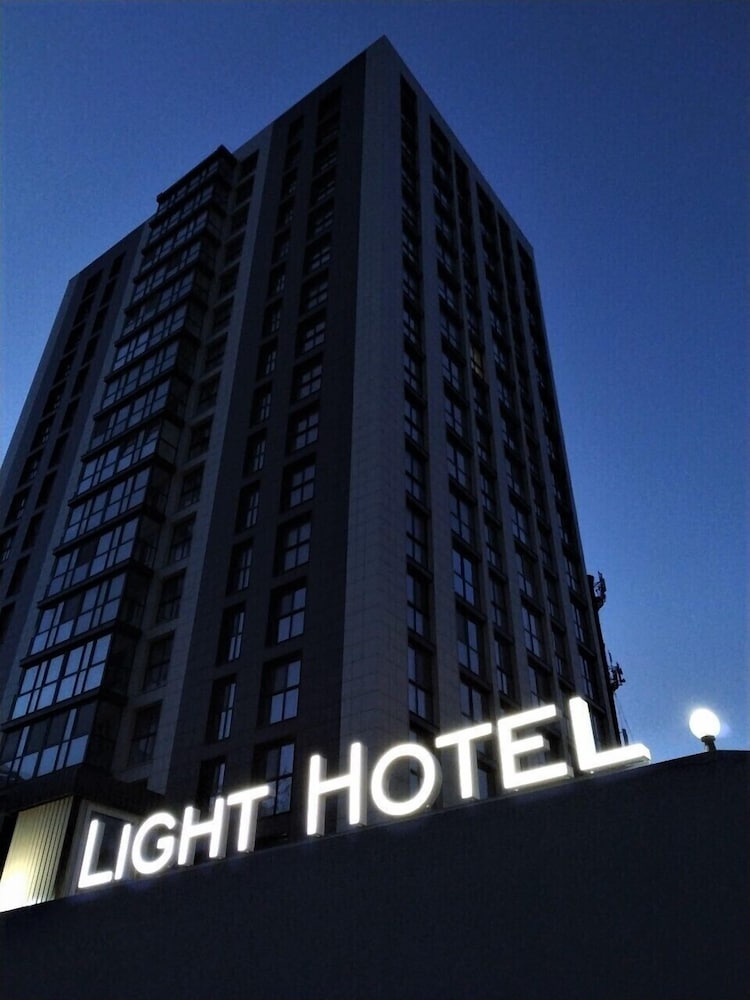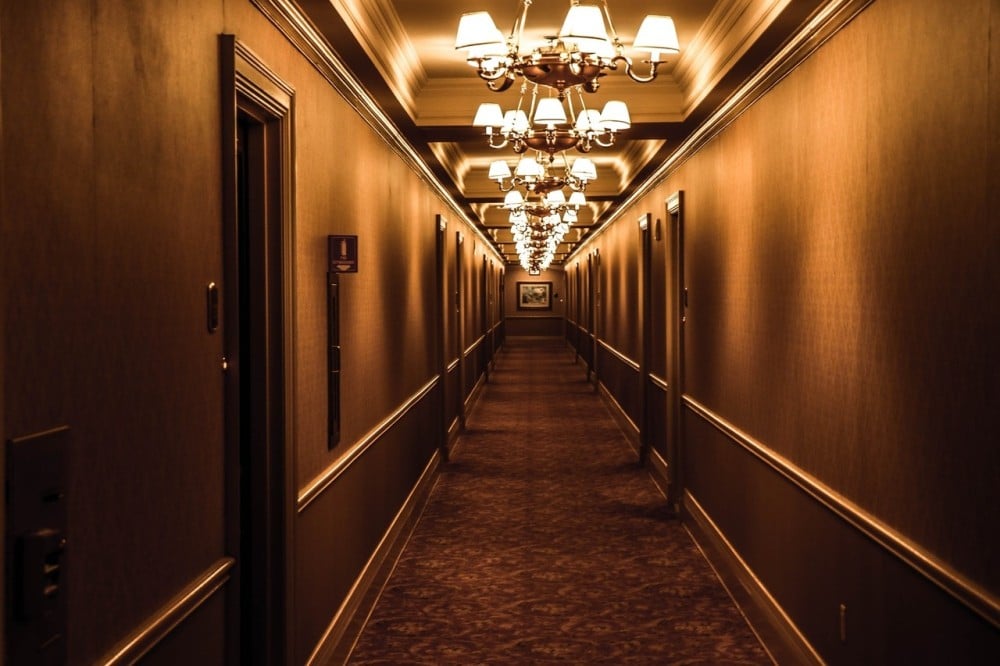In the hospitality industry, ambiance holds great importance. It is what distinguishes a premium hotel from an ordinary hotel. Hotels that offer better ambiance can price their rooms more expensively and thus make more profit than those that do not focus on it. To provide a premium ambiance, a hotel needs great aesthetics and lighting to complement it.
You can't just implement a lighting solution without thinking about it well and expect the hotel to look great implementing the lighting solution. Expensive furniture and interior design require good lighting to provide that premium look. So, if you are looking for a hotel lighting solution, this article has been put together for you. He will explain everything you should know before implementing a lighting solution.

Hotel lighting design should pay attention to the relationship between color temperature and lighting, and carefully create a suitable space atmosphere. In general, color temperature and lighting should be matched in direct proportion, that is, high light, high color temperature or low light, low color temperature. Sorry to see many hotel lighting designs, the color temperature is usually high, but the lighting is generally low, often falling into a "gloomy" atmosphere!
The more advanced the hotel lighting design is, the appropriate light distribution is often selected according to the hotel building structure and space ratio. According to the room-to-air ratio in different functional areas of the hotel, light distribution parameters such as light intensity distribution, central light intensity and half-light intensity of the light distribution curve are examined to create the best light flow effect.
No matter the type of hotel, creating a friendly, warm and friendly atmosphere should be the common appeal of a hotel's night lighting design.
What is hotel lighting?
Hotel lighting, in the simplest terms, means illuminating the hotel with the right solutions. However, it is an overly simplified description and needs to account for the complexities involved in the process. You have to keep in mind that different parts of hotels are designed for other purposes; Hence, lighting requirements in these areas also vary. While lighting a hotel, you should do more than just install the same fixtures in all the hotels as that will make them look dull and unattractive.
You should understand that the lighting requirements for rooms, foyers, corridors, stairs and reception are different. So, you should light them appropriately. Great hotel lighting will encourage more visitors and create more opportunities to earn profits.

The importance of hotel lighting
As discussed previously, lighting in a hotel is just as important as interior design. Imagine spending thousands of dollars on interior design but forgetting the basics of lighting. Despite the huge investment, poor lighting will make the hotel look dull. In return, good lighting will encourage more visitors, and make them feel comfortable and comfortable. Moreover, the lights will highlight the interiors elements that you want to show off to clients.
With decent interior design and great lighting, the hotel will be rated as one of the best places to stay in the area.
Another important factor to consider is the amount you will save with decent lighting. For example, lighting a hotel with incandescent bulbs will drive up energy bills and increase operating costs. In contrast, choosing a cost-effective solution such as LEDs will reduce your energy bills and significantly reduce your hotel's operating costs. You can invest the amount saved by the lighting solution in another productive part of the hotel with a higher potential for profit.
How hotel lighting adds value
Properly lighting your hotel will drive more customers towards your business and generate more profits. Let's take a look at exactly how good lighting makes this possible.
1. Improves mood
Lighting has a huge impact on people's moods. If you have fairly dim lighting in the hotel, it will make guests feel bored. Even if your hotel has a great interior design, poor lights will prevent the guest from observing and appreciating the design details. Moreover, good lighting will make the place “Instagram-worthy”, which is one of the main features that most tourists look for in the areas where they want to stay.
Another point is that humans remember a place by how a particular area made them feel. Therefore, if a hotel helps guests maintain a better mood throughout their stay, they will be more likely to recommend it to their friends and family.
2. Activating the senses
In addition to making the interior look bad, poor lighting makes visitors feel sleepy. This is because our bodies produce a hormone called melatonin, which is responsible for initiating sleep. This hormone is stimulated in dark places and makes us feel tired and sleepy. Hence, guests will always feel bored without proper lighting in hotel spaces. In contrast, good light will stop melatonin production and make the guest feel active at all times.
3. Provides comfort
With adequate lighting, the guest will feel more comfortable, especially when they are on work-related trips and have to get some work done in their rooms. Furthermore, dim lighting may make it difficult for visitors to dress appropriately before heading out. This leaves a wrong impression on visitors, which discourages them from visiting the facility again. In turn, good lighting creates an atmosphere that allows guests to focus on what they are doing. Thus, it leaves an excellent impression, increasing the likelihood of recommending your hotel to others.

Things to know before lighting a hotel
Now that you are aware of the basics of hotel lighting, let's take a look at some of the basic factors you should keep in mind while choosing lights for your hotel.
1. Try to reduce glare
While lighting a hotel, make sure you stay moderate. Too much light indoors can produce glare and strain visitors' eyes. While the light is sufficient to show off all the interior details, you must ensure that it is not too bright to cause any glare. The recommended lux lighting level for hotels is around 150, but it is not a universal rule. The number can change dramatically based on the amount of natural light entering the interior.
You should also look for anti-glare solutions. It may come at a higher price, but the investment is worth it, considering the benefits you will get from it.
2. Distribute lights according to requirements
Different parts of hotels will have different lighting requirements, which ensures proper distribution. You can't just light one hotel area very brightly and leave the other areas in the dark. You should balance hotel lights according to the requirements of a particular area. For example, you cannot use the same lights in hallways that you would use in bedrooms. This is because the requirements for bedrooms are very different from hallways.
3. Color temperature
Color temperature is one of the most important factors when lighting a hotel. It is measured on the Kelvin scale and indicates the colors produced by light. Different light temperatures have other effects on occupants' moods. In general, the color temperature ranges from 1,000 to 10,000 Kelvin. Lights below 3,000 Kelvin produce a warm light, creating a welcoming and warm feeling. In contrast, bulbs with a core temperature of over 4,000 emit cool light and mimic natural light. These lights make passengers feel more energetic.
Temperatures greater than 4,000 degrees Celsius should be used in designated work areas. However, when it comes to lighting bedrooms and other spaces where you want to create a cozy ambiance, lights under 4,000 work best.
For more information, you can read the best color temperature for LED desk lighting and what color LED light is best for studying, sleeping and playing .
4. Color rendering index
• Color rendering index is also as important as color temperature, but it has a different role. It measures how effective artificial light is in making colors appear as accurate as they do under natural light. It is measured on a scale from 0-100. When the CRI approaches 100, colors will appear accurately as they appear under natural light.
This does not mean that you should use high CRI lights in all parts of hotels. Some interior features will look better with a lower CRI. You should understand how CRI affects lighting in your hotel and choose fixtures appropriately.

How to light a hotel
Different hotels will have different requirements when it comes to lights. However, the basics will remain the same regardless of the size and interior of the hotels. Let's take a look at how to effectively light a hotel.
1. Examine the hotel layout
The first thing to do when lighting a hotel is to examine the layout of the hotel and understand how you want the lighting to work. If you already have some lights in place, it will be easier to identify and correct flaws in the new design. You must plan carefully how you want the hotel to appear. Once you have this diagram, you can proceed to the next steps.
2. Prioritize efficiency
The primary purposes of lights in a hotel are to enhance the facilities and ambiance. You can achieve both goals by choosing energy-efficient solutions like LED lights. These bulbs are the most efficient options because they save energy and provide much better durability. Furthermore, you will likely find a variety within LEDs that will help you reproduce the scheme you have in mind.
3. Maintain a theme
Once you have finalized the design and chosen the appropriate type of lighting, you must select a theme for your hotel lighting. It should be unique and have a personality of its own. Lighting should make the hotel recognizable and improve the overall ambiance of the place. While you can certainly get inspiration from other hotels, only partially copy their design. Each hotel has a unique interior design, thus ensuring different lighting conditions.
4. All areas must have adequate lighting
While lighting a hotel, give due importance to all its parts. For example, you should give as much importance to the landscaping and facade of the hotel as you do to its importance. There will be different elements within the interior, and each should receive adequate light. You should focus on more than just the interior of the rooms and leave the hallways out of your plan. It will make the overall lighting in your hotel look dull and aesthetically unpleasant.
An important point to mention is maintaining one tone throughout the hotel. The multiple colors seem to make the hotel more vibrant than it should be, which can be uncomfortable for guests.
5. Use flexible options
Different visitors will have different lighting requirements in their rooms, which you can address with flexible options. You can use lamps with switchable temperatures, allowing the guest to adjust it according to their requirements. The smart LED lights are also adjustable, allowing guests to control the brightness, color temperature, and even the color of the lights.
By using flexible lights, you can make an individual room suitable for different types of guests as per requirement.

